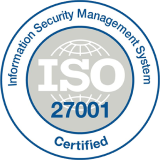Effective Project Scope Management: Tips to Keep Your Projects on Track

Your project's success depends on managing its scope effectively. This includes objectives, deliverables, milestones, and technical requirements. The project scope defines what needs to be done. Scope management ensures everyone understands their roles and expectations, preventing scope creep, a common problem in project management.
Here are valuable insights into managing project scope and avoiding scope creep, helping you keep your projects on track and within budget.
Understanding Project Scope Management
Effective project management starts with a clear understanding of the scope of the project. It defines the boundaries of the project, including objectives, deliverables, tasks, costs, and deadlines. Project scope helps everyone involved understand what the project will achieve and the work needed to achieve it.
Project scope management involves defining the required work and ensuring only that work is completed. This process includes creating a detailed project scope statement and outlining the project's deliverables, boundaries, and acceptance criteria. Effective scope management is crucial for project success because it keeps the project on track, within budget, and on time.
What is Scope Creep?
Scope creep, sometimes known as "requirement creep" or "feature creep," refers to the uncontrolled expansion of a project's scope. This happens when additional features, requirements, or tasks are added to a project without proper approval or adjustments to time, cost, and resources. If not managed effectively, scope creep can lead to delays, budget overruns, and project failure.
Causes of Scope Creep
Understanding the causes of scope creep is the first step in helping it. Here are some common factors that contribute to scope creep in projects.
Lack of Clear Initial Scope Definition: When the project scope is not clearly defined from the outset, it is easy for additional tasks and deliverables to be added without proper consideration of their impact.
Frequent Changes in Project Requirements: Projects often experience changes in requirements due to evolving stakeholder needs, market conditions, or technological advancements. These changes can lead to scope creep without a strong change control process.
Poor Communication and Stakeholder Management: Ineffective communication between project team members and stakeholders can result in misunderstandings and out-of-alignment expectations, contributing to scope creep.
Insufficient Documentation: When changes to the project scope are not properly documented, it becomes challenging to track and manage these changes, leading to scope creep.
Strategies for Managing Project Scope
Managing project scope effectively involves several key strategies:
Developing a Comprehensive Project Scope Statement:
Detail the project's objectives, deliverables, milestones, and technical requirements. This thorough scope statement provides a clear reference for the project team and stakeholders, ensuring everyone understands the project's boundaries and goals. By having a well-defined scope, you can prevent misunderstandings and keep the project on track.
Stakeholder Engagement
Involve stakeholders from the beginning to understand and document their requirements and expectations. Regular engagement helps maintain alignment throughout the project, ensuring that all parties are on the same page and any concerns are addressed Immediately. This continuous communication ensures trust and minimizes surprises later.
Using a Work Breakdown Structure (WBS)
Break the project into smaller, manageable components with a WBS. This helps in organizing tasks, assigning responsibilities, and ensuring that all aspects of the project are covered. By doing so, you can improve efficiency and ensure nothing is overlooked.
Defining and Documenting Project Requirements Clearly:
Create clear, detailed requirements to reduce the likelihood of misunderstandings and changes later in the project. Documenting these requirements ensures that everyone involved has a precise understanding of what needs to be done and can refer back to this documentation if questions arise. Clear documentation helps maintain consistency and accountability.
Implementing an Effective Change Management Process:
Establish a formal process for managing changes, ensuring that any modifications are evaluated for their impact on scope, time, and budget before being approved. This process helps maintain control over the project and prevents scope creep. By managing changes effectively, you can keep the project aligned with its original goals.
Regularly Reviewing and Updating Project Scope:
Make sure the scope of the project remains aligned with the goals of the project regularly. Regular updates and adjustments help address any changes promptly and keep the project on track. This proactive approach ensures that the project can adjust to any new developments without losing focus.
Tools and Techniques for Managing Scope Creep
A combination of tools and techniques is required to manage scope creep. Here are some effective tools and techniques:

Lean Project Tools for Effective Scope Management
Lean project tools such as Kanban boards, value stream mapping, and Gemba walks provide visual representations of the project workflow. These tools help identify bottlenecks and inefficiencies, allowing the team to address issues quickly. By visualizing the process, teams can streamline tasks, improve communication, and maintain focus on the project scope.
Regular Scope Reviews and Adjustments
Regularly review the project scope to ensure it remains aligned with project goals and stakeholder expectations. Make adjustments as necessary to address changes and keep the project on track. Affect reviews help catch deviations early, allowing for timely interventions and maintaining project momentum. This proactive approach ensures that the project evolves in line with stakeholder needs.
Well-Defined Change Control Process
Establish a formal change control process to manage changes to the project scope. This process should include documenting, reviewing, and approving changes to ensure that they are properly considered and managed. A structured approach to change control helps avoid scope creep and ensures that all changes are aligned with project objectives. Clear communication of the change process also fosters stakeholder confidence and buy-in.
Tips to Avoid and Prevent Scope Creep
In project management, taking proactive steps can help limit scope creep. Here are five actionable tips:
Make a Clear Statement of Work
A statement of work (SOW) serves as a project roadmap. It lists all tasks, due dates, descriptions, and assigned resources. An SOW ensures everyone understands the project requirements and aligns with the client's expectations, reducing the risk of scope creep.
Hold a Kickoff Meeting
Hold a kickoff meeting once the SOW is finalized. This meeting allows all stakeholders to review the project requirements before work begins. Discuss roles, milestones, and the check-in process, whether through daily or weekly meetings.
Do Not Be Afraid to Say No
Scope creep often occurs from a lack of discipline. Be prepared to say no to client change requests or gather all requests for a new project once the current work is complete.
Keep Simple Changes and New Tasks Separate
Differentiate between tweaking existing functionality and creating new functions. New tasks outside the project scope should be estimated for time, resources, and deadlines. Enter agreed-upon changes into your project charter.
Keep Your Clients Informed
Keep clients informed about decision-making processes for change requests. Document and agree upon all project objectives and change requests with the client during regular status meetings.
Conclusion
Managing a project's scope carefully and avoiding scope creep is essential for success. By setting clear goals and objectives, engaging stakeholders, and using effective project management strategies, you can keep projects on track. Regularly review and refine the project scope, use visual management tools, and establish a detailed change control process to prevent scope creep. These principles help you create a high-performing team that ensures project success and delivers value to stakeholders.
Contents
Built for Builders. Priced for Startups.
Tired of unpredictable cloud bills? ComputeSphere offers modular, fixed-cost cloud hosting that grows with your startup—no DevOps headaches, no surprises.
Get StartedShare this article
Browse Some Related Blogs
Relevant and related contents you can read









